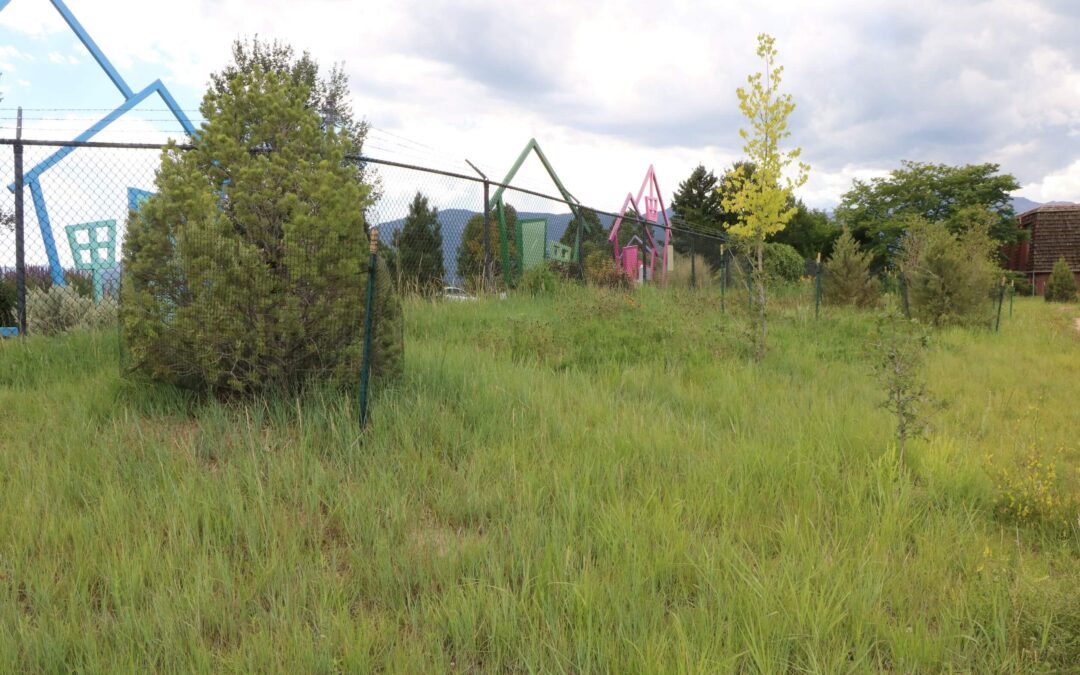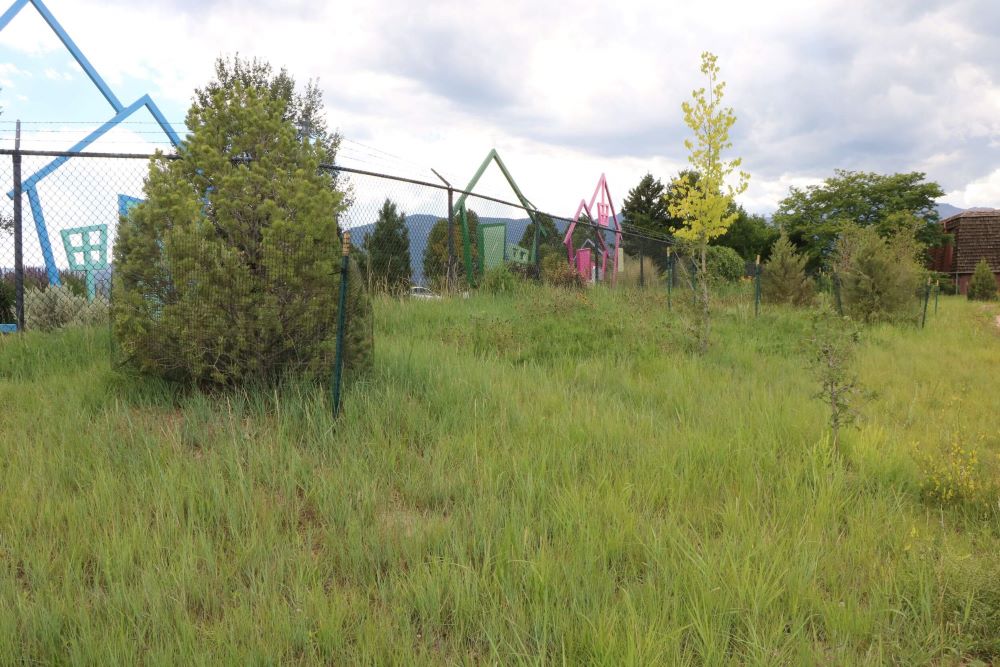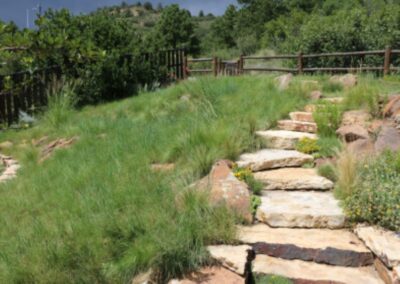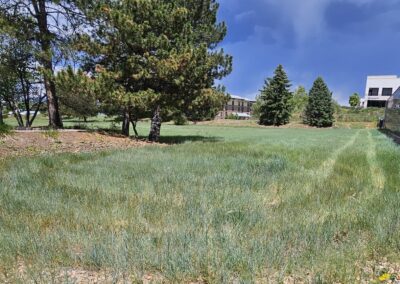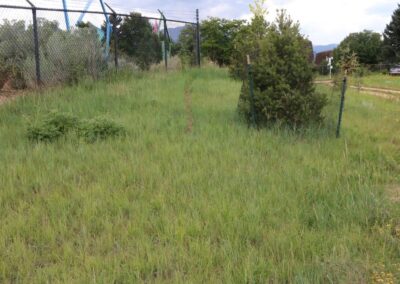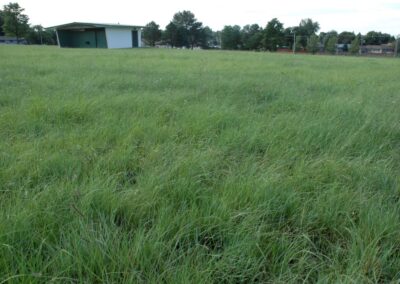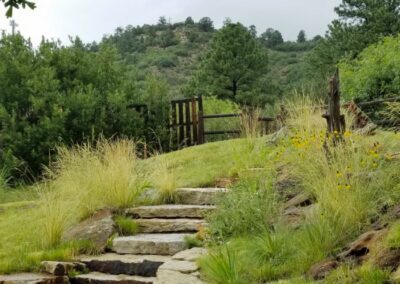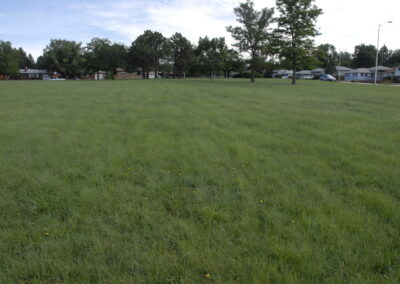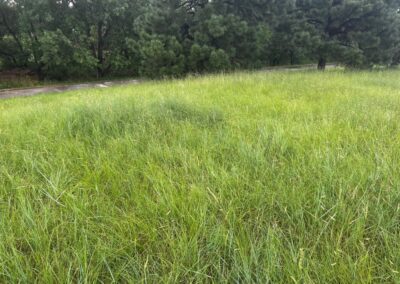Native Shortgrass Prairie Mixture
Native shortgrass prairie mixtures include shorter grasses found naturally east of the Colorado foothills, and can be a low-water, low-maintenance groundcover.
Active Growth
April-November
Light Needs
Full Sun
Origin
Native
Best For:
- Low-maintenance landscapes
- Areas with a variety of soil textures and topography
- Maximizing benefits for insects, birds, and wildlife
- Informal or naturalistic landscapes
- Areas without permanent irrigation
- Sites with minimal mowing
- Landscapes where variation in height, texture, and color is desirable
Not Suited For:
- Formal landscapes
- Shady locations
- Elevations above 7,000 feet
- Lawn-like areas where a uniform look is desired
- Repetitive use areas
- First thirty feet near a home or structure where wildfire is a concern
Tolerates: Drought, varying weather conditions, and is adaptable to different site conditions.
Irrigation need (FRONT RANGE)
No Irrigation
Turf Irrigation
Water Use: Shortgrass prairie mixes can be watered once per week during the growing season, during dry periods only, or not at all. They’re a great option where water will be turned off long-term.
Using a Shortgrass Prairie Mixture
Shortgrass prairie mixtures can be used to create a sustainable landscape with natural variations in color and texture for naturalistic or informal areas. The variety of grasses maximizes value to insects, birds, and wildlife, and can be used to create a transition between more formal landscaped areas and natural vegetation. The mix of different grass types is adaptable to varying weather conditions and site characteristics. Shorter grasses can be mowed less often and cause fewer fire concerns than mixtures with taller grasses.
Native Shortgrass Mixture Attributes
- Contains a variety of grasses with different growth habits, heights, textures, and colors
- Often includes both warm-season and cool-season grass species
- Most shortgrass mixtures include pre-determined species but can be customized for many elevations and site conditions
- The variation in leaf colors between species will be present in summer and winter
- Leaf height of 6-12 inches and overall height of 12-24 inches with seedheads
- Will not create a uniform appearance and may appear brown with frequent mowing
- To create a beauty band, strategically seed buffalograss or another short grass in a 2-to-8-foot band adjacent to pathways and transition to the native prairie mix farther away
Installing Native Shortgrass Prairie Mixtures
- Installed by seed and can be planted anytime from May to September
- Requires 2 lbs per 1,000 square feet for irrigated landscape projects
- Seeded at a depth of 0.25 to 0.50 inches
- Select a mix containing true native species for long-term drought tolerance
- Avoid introduced or turfgrasses marketed as “low-grow” mixes
General
The seeds of different species in the mixture will germinate at different times. Keep the soil surface moist for at least three weeks to ensure the success of later-germinating seeds.
Weed Management
Because shortgrass mixtures usually contain both warm- and cool-season grasses, herbicide choices will be limited. Carfentrazone can control broadleaf weeds shortly after germination, leading to less weed competition over time.
Water to Establish
Some of the species in a shortgrass mixture will germinate quickly while other species will take longer to grow. It’s important for uniform, successful germination that the soil is kept moist until seedlings emerge. In the first three weeks, keep the soil surface consistently moist but avoid runoff and pooling. In weeks four and five, moisten the soil daily to prevent new seedlings from dehydrating. Fix any irrigation problems as quickly as possible to prevent seedlings from drying out and dying.
Mowing During Establishment
Mowing is optional during the establishment phase. Leaving the grass taller, and potentially even unmowed for the first year, if allowed by your HOA or city ordinances, will allow it to grow deeper roots. If the grass grows tall enough to look unsightly or cause concern, mow it as high as possible, ideally so the grass is four to six inches tall after mowing. Mowing can be beneficial to create a more tidy appearance and help with weed suppression.
Long-Term Watering
Shortgrass prairie mixtures usually require 8-12 inches of irrigation per season or less. These mixtures can be watered once per week during the growing season, during dry periods only, or not at all. Watering infrequently but consistently will allow the grasses to stay green during the growing season and will reduce wildfire risk.
These mixtures are often planted in areas where water or irrigation will be turned off long-term, and can be left unwatered during watering restrictions, but will often go dormant (turn brown) during periods of dry weather.
Mowing
Shortgrass prairie mixtures can be mowed periodically once they reach 8 to 10 inches tall. They may require more mowing if they receive more irrigation or rain. If the mixture contains western wheatgrass, it may grow rapidly in spring in wet conditions. Mow low in late winter to remove the previous year’s growth for a greener, more uniform stand.
Weed Control
It can be challenging to find herbicides safe for broadcast application in a mixture of both warm- and cool-season grasses. Spot spraying may be required.
Fertilizing
Most native grass areas can be fertilized less often than traditional lawns. While they don’t need to be fertilized at all, periodic fertilization will lead to a thicker, denser stand of grass that may have a better appearance and fewer weeds.
Start your project
Discover how to plan and implement a native grass project for long-term success.
